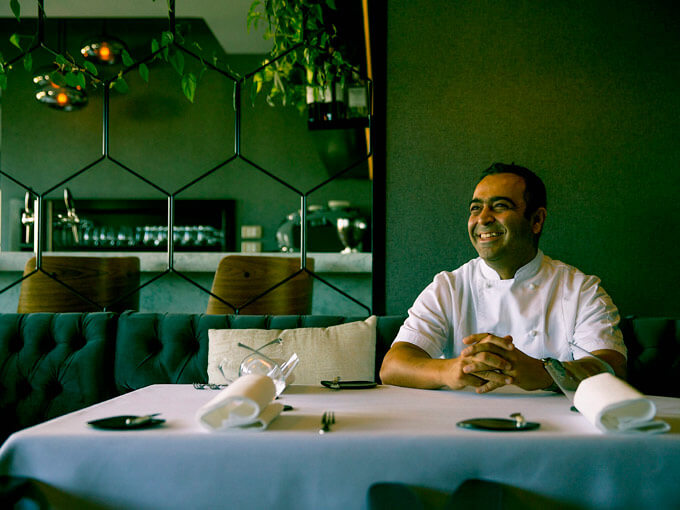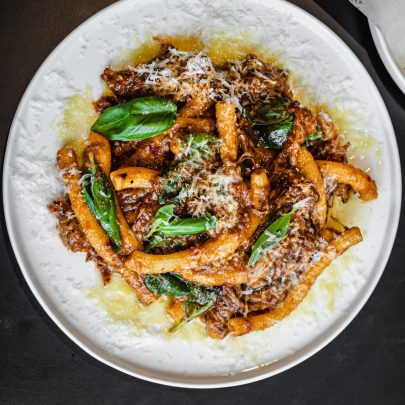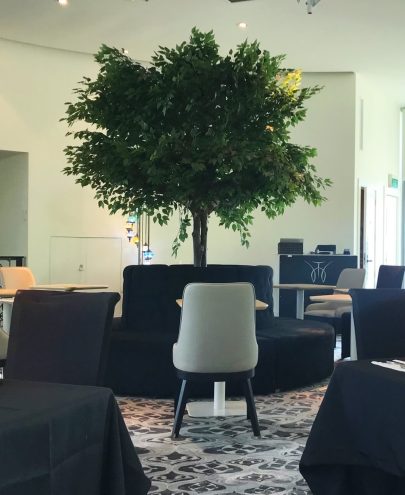Jun 21, 2018 Restaurants
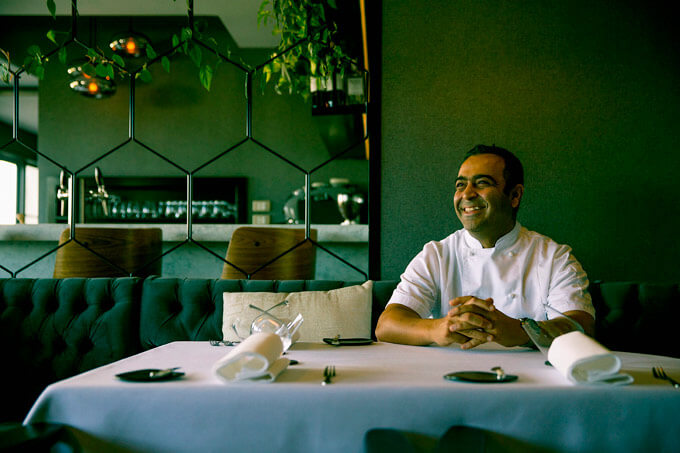
In an unprecedented triumph, Sid Sahrawat and his team swept most of the major categories in the Metro Peugeot Restaurant of the Year Awards 2018.
Simultaneously, he has his eye on everything around him, flitting up from plating to see who is arriving through the door, and flashing a shy smile; scanning the room, where servers glide between tables, sweeping up crumbs and topping up wine without being noticed. From time to time, he takes to the floor himself, delivering dishes to see up close how people react to his art.
Following two consecutive Supreme Winner awards for modern-Indian restaurant Cassia in 2016 and 2017, Sahrawat and his team have taken out an unprecedented number of awards this year (excuse us, while we take a deep breath): Sidart wins the Best Fine Dining category and the Supreme Award for Restaurant of the Year; Cassia wins Best Smart Dining and is Runner-up for Restaurant of the Year; Cassia’s bar manager, Prateek Arora, is Restaurant Personality of the Year; Sahrawat is Best Chef; and the Restaurateur of the Year award goes to — you guessed it — Sid and Chand Sahrawat.
This glut of awards reflects Sahrawat’s unquenchable thirst for perfection, dedication to his craft and attention to detail in every aspect of his restaurants. Now 37, he has been cooking for more than half his life, choosing a career in the kitchen over joining the army at just 14 in Chennai, India. He followed a traditional path of study, international apprenticeships, and hard yards in some of Auckland’s best-known restaurants — Totó, The George — before filling Michael Meredith’s shoes as head chef at The Grove , where he really began to flex his creativity, then finally going out on his own with Sidart in 2009.
See here for all of Metro’s Top 50 Auckland restaurants for 2018
A dedicated research and development chef, Lesley Chandra, works alongside Sahrawat to come up with new dishes that are then refined and perfected. “We are always bouncing ideas off each other and looking at the rest of the world and seeing what are they doing. We don’t want to copy them, we want to do it in our own way.” The result is food that stimulates your mind and your palate, a journey of unexpected textures, reinvented familiar flavours and playful clashes of sweet and savoury elements — think ice creams of sweet onion, parmesan or porcini — that Sahrawat nails every time.
As if the limitations posed by seasonality weren’t enough, earlier this year Sidart made a move to use ingredients entirely sourced from New Zealand, right down to the salt, oil and flour. “Every year, we think, what’s next for us, and for me and the team this was the next thing we needed to do,” he says. “It has been challenging in some aspects; it really pushes us to work harder in terms of creating the dishes and finding more artisan suppliers and growers.” Along with this move comes a narrative that gets passed on to diners, relaying stories about the bay where the paua is harvested or the guy who catches the hapuku, adding another layer of richness to the Sidart experience.
When deciding the Best Chef award, we asked ourselves, who’s leading the way, doing things that others are following or will follow? Who’s shaking up the world of cooking, with surprising and wonderfully stimulating results? We also asked, who is a leader — someone at the heart of the restaurant experience who not only cares about the quality and provenance of the food, but also fosters a positive working environment? The answer, of course, was Sid Sahrawat. This is a chef who credits the dedication of his staff constantly and recognises the importance of letting them pursue their own dreams as a means to better themselves and the restaurant; later this year, for example, Cassia’s head chef, Alok Vasanth, will take three months off to work at Stockholm’s three-Michelin-starred Frantzén, a small restaurant with as many staff as it has seats.
But one man can’t do all this alone, and the judges chose to award the Restaurateur of the Year title jointly to Sahrawat’s wife, Chand, who is behind the scenes making everything tick, including developing the home gardens, where they grow obscure ingredients such as lemon bergamot, anise hyssop, ghost chillies, nasturtium leaves, purslane and shiso. The couple live and breathe fine food, with their holiday itineraries dictated by where and what they will eat, and their entrepreneurial spirit and unwavering enthusiasm elevate their restaurants above the rest.
In 2016, Sidart was refurbished, doubling in size and gaining a bar, with the intention of making the vibe more relaxed. Sahrawat says locals now pop in for a gin and tonic after work or a cocktail before dinner. The changes also accommodate solo diners or couples who may not want to do the full dégustation. “I never wanted it to be stiff. We want to have a bit more fun, you know, but obviously still be very precise in what we do in terms of food and service. But I don’t believe it has to be pin-drop silence, or you have to watch what you say, or you can’t have a laugh. I want people to have a good time when they come here.”
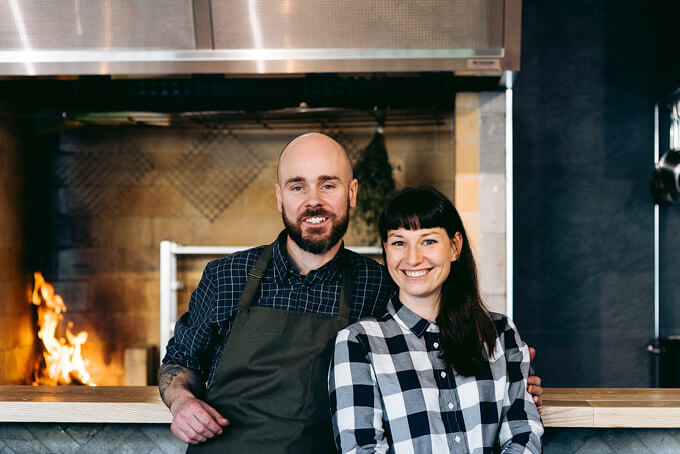
The judging process
This year, judges found the lines between traditional dining categories increasingly blurred, with elements of fine dining trickling into the mainstream, and some fine-dining places becoming more casual. Nowhere do you feel this transition more than sitting at the pass on a barstool at Laura and Ed Verner’s Pasture (runner-up in the Best Fine Dining category) and watching the blazing fire being stoked. Here, they crank the 80s pop-rock at a volume that’s a little more “party” than “dinner”, the staff wear check shirts, there’s not a white tablecloth in sight and you are encouraged to rip the crusty rye sourdough with your hands and use it to swipe the aged butter from the plate. In fact, much of the menu is designed to be eaten with your hands, including one of the lushest bites we’ve eaten this year — pig crumpet: airy, golden and fried in pig fat, topped with a lick of rich liver mousse, house-made guanciale, and a tiny mountain of shaved fresh black truffles.
The drink matches at Pasture also stray from the traditional, favouring natural, small-batch wines — which are increasingly creeping on to drinks lists throughout the city — and including sake, rum, beer and all manner of preserves and ferments. Some of these pairings are mind-blowingly good: sake, lovage and green tomato martini; an apple juice that tastes as though the fruit was freshly plucked from the tree — seeds, stem and all (the perfectly crisp antidote to the aforementioned pig crumpet); and a fermented white asparagus drink — “liquid gold”, Laura tells us — which tastes like effervescent popcorn. Genius. No wonder Pasture takes this year’s award for Best Drinks List.
Seasonal, local, home-grown and house-made are still on the tip of everybody’s tongue, and a natural aesthetic is being applied to plating, too, with chefs using shells, rocks, blocks of ice and little mossy forests in place of traditional crockery. Many of the oldest forms of preserving are still huge news, with chefs turning their hands to making their own charcuterie, kimchi, pickles and ferments. And everybody seems to be experimenting with their own condiments — mushroom ketchup, anybody? When it comes to bread and butter, we are obsessed, with restaurants seeking to perfect their deep, dark, chewy loaves, and trying to outdo one another with butter that is aged, cultured, browned or seasoned with kelp.
Octopus and ceviche have become familiar additions to many menus, and while fish of the day was once almost always snapper, hapuku and tarakihi, we are finally seeing more uncommon species taking their place in the spotlight, with mullet, bonito, turbot and kahawai all making an appearance. The oceans will high-five us later.
Vegetables and vegetarians are also getting the attention they deserve, with chefs creating entirely plant-based tasting menus, and serving dishes where the vegetables act as the main event rather than as a supporting act. Honourable mention goes to Culprit, joint runner-up for Best Inner-City Bistro, and their dish of grilled fennel, Curious Croppers tomato, whipped goats’ cheese and pearl barley. It was not just one of the tastiest vegetarian dishes we ate this year, but one of the tastiest dishes, full stop.
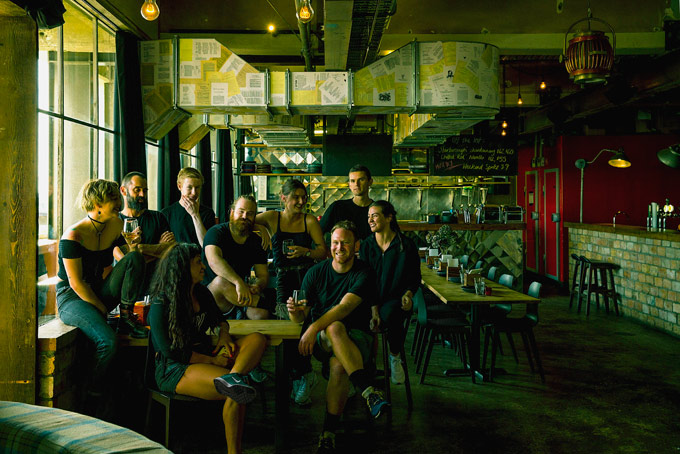
When deciding which of the seven new restaurants in this year’s Top 50 was the best, the judges considered which represented an exciting change in our city’s dining scene, with an authenticity that will last after the sheen of being new has worn off. The winner: Cotto, an unashamedly urban Italian restaurant that embraces its Karangahape Rd location overlooking the motorway. Starting out as a pop-up late last year in what was previously the dark and divey bar 69, it attracted droves with moreish plates of silky handmade pasta, cheesy gnocchi and butter-doused ricotta gnudi from Hayden Phiskie and John Pountney. Such was their success that at the start of this year, they announced they would be staying right where they were: 69 was out, Cotto was in. And we couldn’t be happier.
Pasta is made fresh here every day — a task that’s second nature for Pountney after 30 years in the game — and each afternoon, the kitchen is cloaked in a veil of saffron-speckled pasta sheets hanging to dry for their signature maltagliati ragù. Portion sizes are manageable, and at prices unheard of in this town. Phiskie says he wants people to leave dreaming of the next time they will return, not feeling like they never want to see risotto again. We think they’ve nailed it — the simple and seasonal menu is filled with comforting food you will want to eat again and again.
For now, the space remains relatively unchanged from its bar days. However, there is a noticeable shift in energy, thanks to staff who illuminate the room. Sporting pigtails, bare midriffs and chokers, black ripped jeans and hoodies, their camaraderie is obvious as they laugh and sing while preparing for the evening service, looking more like they are setting up for band practice than running a restaurant.
Phiskie says he’s “stoked” to have inherited a restaurant-ready space on K’ Rd, and it’s written all over his beaming face. “For us, it is the perfect outcome. It’s a real issue for restaurants — you invest all that money straight up, and you have a really good period to start, then another restaurant opens up next month and you never catch up on that money you have invested. We don’t have that, so we are always moving forward.”
This focus on fantastic food served in no-frills bar settings is something we are seeing more of. At Madame George — also on K’ Rd and new to the Top 50 — most nights of the week, the outdoor tables are teeming with off-duty artists necking cans of VB, in stark contrast to the sophisticated plates being served up inside by chef Patrick Schmitt (ex- Orphans Kitchen ). As if you are in a fine-dining restaurant, you’ll be served an amuse-bouche and house-made bread with kawakawa butter, followed by inventive and artfully presented fare such as bean curd emulsion topped with delicate ribbons of cucumber and apple, golden garlic chips and a scattering of fennel fronds.
Apéro , Gemmayze St and the inestimable Coco’s Cantina, all also in the Top 50, affirm the rise of this pocket of the city as a dining destination. Amid the continued gentrification of the area, the majority of restaurants here are independently owned and operated by people willing to embrace the grit that characterises K’ Rd, rather than try to change it. The result is a cluster of restaurants, each with its own strong character, determined to succeed.
Meanwhile, in the central city, five places in Federal St make the list. Ponsonby and Parnell are also well represented; other ’burbs such as Remuera and Waiheke Island, less so.
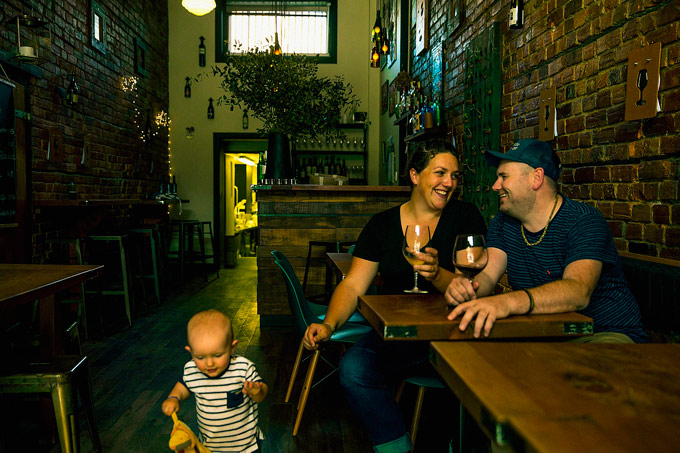
Koski reckons that while the polish of great service can be taught, it all starts with attitude. “When it comes to service here, it’s probably just being relaxed and comfortable and also knowing what you are doing, that’s the main thing. I don’t want robots to just repeat everything I say or do it how I do it. I want their personalities to come through.”
With around 30 glass pours and special bottles scrawled on a chalkboard that can change from one day to the next, he says the biggest challenge is keeping staff up to date with the wine. Constant education leads to self-assurance and, in turn, better service. “At the end of the night, if they are going to have a staff drink, I want them to have something they haven’t tried. I try to get them comfortable with three whites and three reds that are different styles, so that with confidence they can steer someone to this or that and it will work — talking with confidence helps you relax.”
French-born Hottiaux likens the service at Apéro to dining at a friend’s house, a style our judges noted is on the rise, with a growing number of smaller, family-run restaurants serving up cuisine that is close to their heart. Filipino restaurant Nanam has moved from Royal Oak to more spacious digs on the North Shore, still serving its unique take of this under-represented cuisine; at 1947 eatery on Fort St, Indian food such as spicy, simmered-for-hours lamb shank nihaari is accompanied by a stellar craft beer selection; and at Han in Parnell, chef Min Baek is applying French techniques to his native Korean dishes such as bibimbap and beef galbi. These restaurants weave together cultural heritage and playful service with local beer, wine and cocktails crafted to match the cuisine.
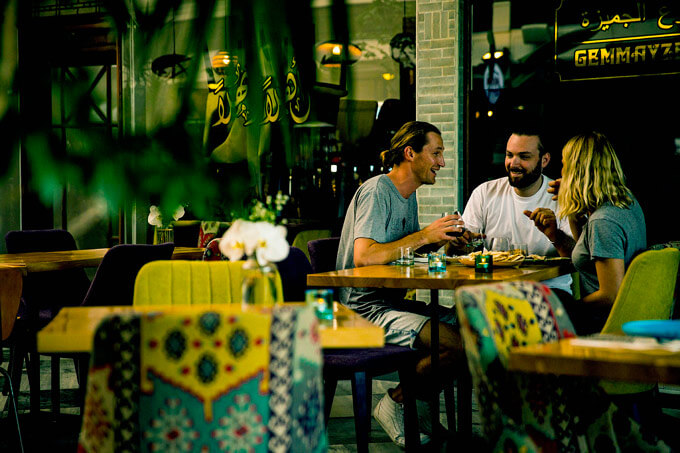
On Monday nights, when the restaurant is normally closed, mother-and-son team Samir Allen and Liane Farry hand over their space to Everybody Eats, a project that uses rescued food destined for the bin to cook a three-course meal offered to the public on a pay-as-you-feel basis. The model allows people in need to eat for free, while those who can afford it contribute whatever they like, with those funds going towards the continuation of the project. Staffed entirely by volunteers, with a different chef and their team taking charge in the kitchen each week, they feed roughly 200 people, with around 80 per cent of them being homeless or in need.
Everybody Eats founder Nick Loosley says Allen and Farry jumped at the opportunity to give something back to the community. “It’s very important to them, it strikes a chord with them culturally. They are people who care about other people, for sure.”
Handing over the keys to your restaurant to a staff of volunteers each week is a trusting and selfless act, and while Allen insists all the credit goes to Loosley, we believe it’s worth acknowledging that the project wouldn’t exist without the generosity of him and his mother. Support from the hospitality industry has seen crews from Cazador , Mudbrick, Bird on a Wire and Burger Burger all showing up to have a turn in the kitchen. This growing sense of community and collaboration among restaurateurs — working with rather than against each other to make our city’s dining culture more enjoyable for everybody — is something we raise our glass to.

